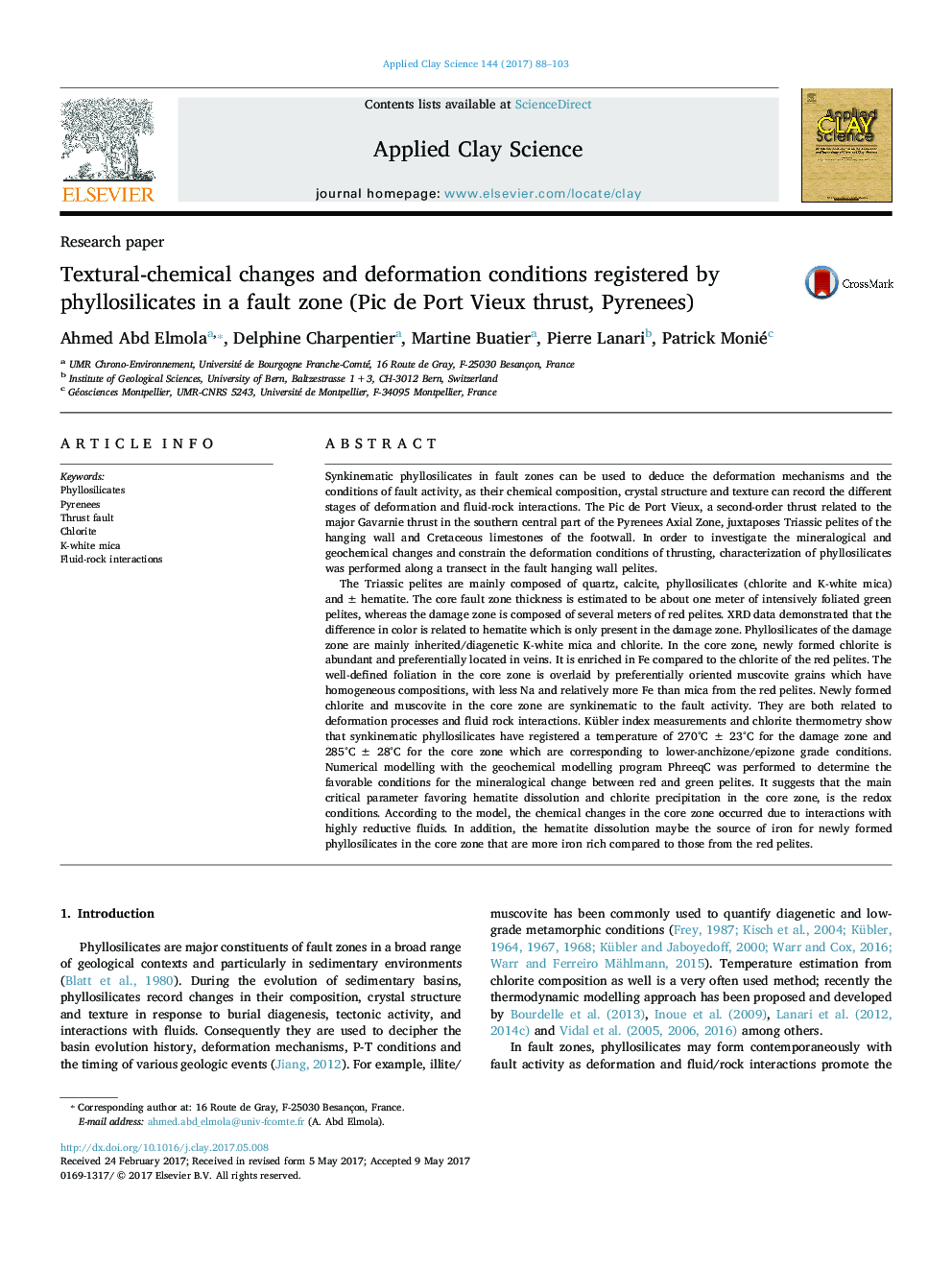| Article ID | Journal | Published Year | Pages | File Type |
|---|---|---|---|---|
| 5468606 | Applied Clay Science | 2017 | 16 Pages |
Abstract
The Triassic pelites are mainly composed of quartz, calcite, phyllosilicates (chlorite and K-white mica) and ± hematite. The core fault zone thickness is estimated to be about one meter of intensively foliated green pelites, whereas the damage zone is composed of several meters of red pelites. XRD data demonstrated that the difference in color is related to hematite which is only present in the damage zone. Phyllosilicates of the damage zone are mainly inherited/diagenetic K-white mica and chlorite. In the core zone, newly formed chlorite is abundant and preferentially located in veins. It is enriched in Fe compared to the chlorite of the red pelites. The well-defined foliation in the core zone is overlaid by preferentially oriented muscovite grains which have homogeneous compositions, with less Na and relatively more Fe than mica from the red pelites. Newly formed chlorite and muscovite in the core zone are synkinematic to the fault activity. They are both related to deformation processes and fluid rock interactions. Kübler index measurements and chlorite thermometry show that synkinematic phyllosilicates have registered a temperature of 270°C ± 23°C for the damage zone and 285°C ± 28°C for the core zone which are corresponding to lower-anchizone/epizone grade conditions. Numerical modelling with the geochemical modelling program PhreeqC was performed to determine the favorable conditions for the mineralogical change between red and green pelites. It suggests that the main critical parameter favoring hematite dissolution and chlorite precipitation in the core zone, is the redox conditions. According to the model, the chemical changes in the core zone occurred due to interactions with highly reductive fluids. In addition, the hematite dissolution maybe the source of iron for newly formed phyllosilicates in the core zone that are more iron rich compared to those from the red pelites.
Related Topics
Physical Sciences and Engineering
Earth and Planetary Sciences
Geochemistry and Petrology
Authors
Ahmed Abd Elmola, Delphine Charpentier, Martine Buatier, Pierre Lanari, Patrick Monié,
